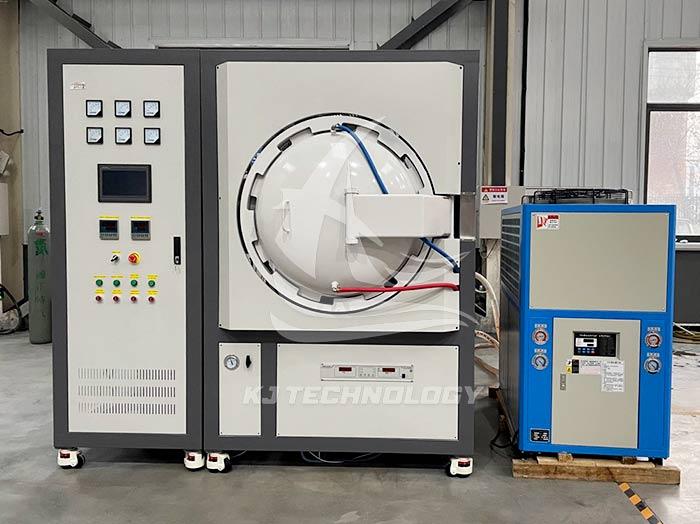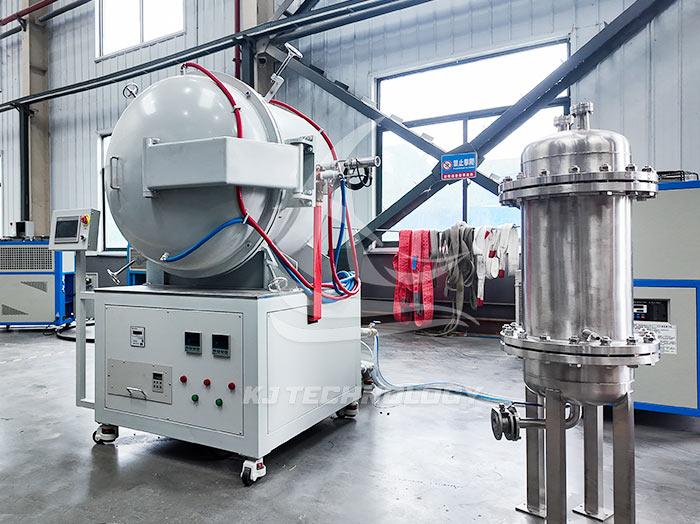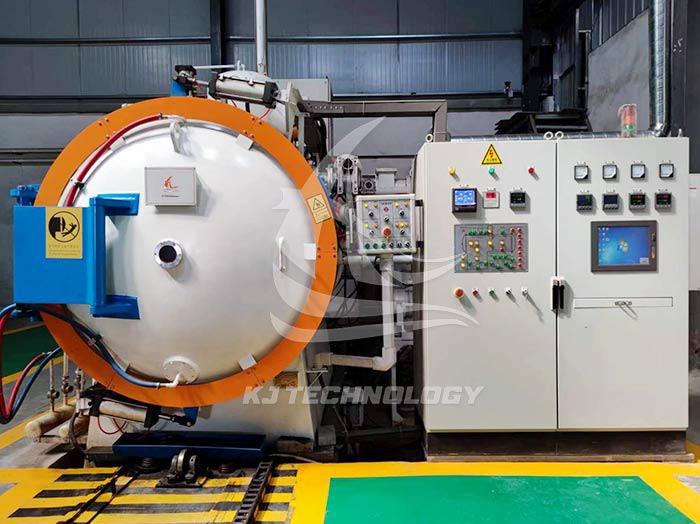Can the laboratory graphite vacuum furnace be used for brazing experiments?
 08-06-2025 Author: KJ technology
08-06-2025 Author: KJ technology
The laboratory graphite vacuum furnace can be used for brazing experiments, and its high temperature performance, vacuum environment, thermal conductivity, mechanical strength, and chemical stability make it an ideal choice for brazing experiments. The following analysis will be conducted from four aspects: equipment characteristics, brazing principles, experimental advantages, and specific operations:
1. Equipment features support brazing experiments
High temperature performance: The heating elements of graphite vacuum furnaces (such as graphite heating rods) can withstand extremely high temperatures (usually exceeding 2000 ℃), far exceeding the temperature range required by most brazing processes (such as silver based brazing materials with a melting point of about 800 ℃ and copper based brazing materials with a melting point of about 900 ℃), and can meet the heating temperature requirements during brazing processes.
Vacuum environment: A vacuum environment can effectively prevent metal oxidation at high temperatures, avoid oxide films hindering the wetting of the base material by the brazing material, and thus improve welding quality. For example, in the vacuum brazing experiment between aluminum alloy and stainless steel, the vacuum degree needs to reach 1.0−2Pa, To remove surface oxide film and promote solder flow.
Thermal conductivity: Graphite has high thermal conductivity, which can quickly and uniformly conduct heat, ensuring uniform heating of welding materials and high-quality welding joints. This is crucial for the accuracy of temperature control in brazing experiments.
Mechanical strength and seismic resistance: Graphite has certain mechanical strength and seismic resistance, which can withstand the mechanical impact or vibration that may occur during the brazing process, reducing deformation and damage during the welding process.
Chemical stability: Graphite has high corrosion resistance to most acids, bases, and salts, making it suitable for brazing experiments on high-purity materials such as semiconductor materials or advanced ceramics.
2. The principle of brazing and its adaptability to vacuum furnaces
Brazing is a method of connecting welded parts by melting and filling the brazing material between them through heating, and then solidifying them. The vacuum environment of a vacuum furnace can remove surface oxide films, improve the wettability of the base material, and thus produce better joint performance (such as increased strength, minimum porosity, etc.). In addition, the vacuum furnace can precisely control the heating/cooling rate, minimize part deformation, and improve the repeatability and reliability of experiments.
3. The advantages of vacuum furnace in brazing experiments
High purity environment: Vacuum conditions can obtain a higher purity atmosphere than conventional atmosphere furnaces, reducing residual oxygen that pollutes workpieces and improving welding quality.
Temperature uniformity: The graphite heating element and furnace design ensure uniform temperature distribution, avoiding local overheating or underheating, and are suitable for brazing complex shaped workpieces.
Process flexibility: The furnace atmosphere can be adjusted by filling inert gases (such as argon) to meet the process requirements of different brazing materials and base materials.
Data recording and analysis: Equipped with an automated control system (such as PLC+WINCC), it can monitor and record temperature, vacuum degree and other parameters in real time, providing a basis for experimental optimization.
4. The specific operation process of brazing experiment
Preparation before welding: Use sandpaper to polish the surface of the sample, remove the oxide film and impurities; Clean the base material with a chemical solution to remove oil stains and oxide films; Finally, clean the surface with alcohol and ultrasonic acetone to ensure cleanliness.
Assembly and fixing: Assemble the workpiece to be welded and fix it in the center of the furnace, avoiding contact with the furnace wall or heating elements.
Vacuum pumping and heating: Start the vacuum pump to pump the furnace to the desired vacuum degree (such as 1.0−2Pa); Apply electric heating to melt the brazing material and fill the weld seam.
Cooling and removal from the furnace: After brazing is completed, the welded parts are cooled to below 100 ℃ and removed from the furnace to avoid oxidation or deformation at high temperatures.








